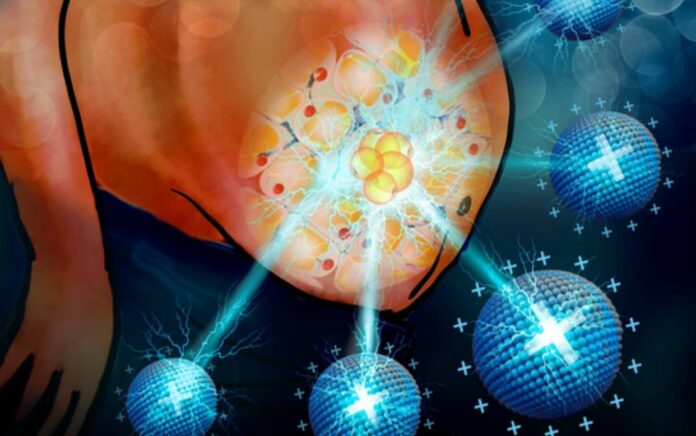Obesity is a serious problem that can lead to high blood pressure, diabetes, chronic inflammation, and heart disease. Researchers have been trying to find ways to treat obesity for a long time. Studies have also found a strong link between obesity and cancer. According to recent research, smoking, drinking alcohol, and being overweight are the three biggest causes of cancer in the world.
Fat cells, which originate from a small fibroblast-like progenitor, not only activate the genes responsible for fat cell growth, but also expand as they store more lipids (adipocytes and adipose tissue).
The basic function of fat cells is to store lipids.
However, excessive lipid accumulation may cause fat cells to become unhealthy, which in turn can cause obesity.
Limitations of Current Methods for Fat Cell Targeting
Many individuals hope that one day scientists will figure out how to properly isolate fat cells and decouple bad fat creation from good fat metabolism. One of the biggest problems with treating obesity is that fat tissue is not spread out evenly throughout the body. Instead, it is found in pieces, or “depots,” that are hard to target in a way that is specific to each depot.
There are two main types of fat: visceral fat and subcutaneous fat. Visceral fat is made up of tissues inside the body that surround the stomach, liver, and intestines. Subcutaneous fat is found under the skin everywhere in the body. Visceral fat makes pot bellies, while subcutaneous fat can make jowls on the chin, fat on the arms, etc. No treatment exists for visceral adipose tissue. And the ways we treat subcutaneous fat now, like liposuction, are dangerous and invasive.
Cationic nanonmaterials to target fat
Researchers at Columbia Engineering and Columbia University Irving Medical Center (CUIMC) have done two new studies that may have the answer to how to target fat cells in a healthy way. The articles provide a novel strategy for treating obesity by targeting particular fat deposits with cationic nanomaterials that can also prevent the unhealthful accumulation of larger fat cells. The materials change the way fat looks instead of destroying it like liposuction does. Visceral adiposity, or belly fat, is the topic of the first research, which was published today in Nature Nanotechnology. The second article, which was released online by Biomaterials on November 28, focuses on subcutaneous fat as well as chronic inflammation related to obesity.
Li Qiang, an assistant professor of pathology and cell biology at CUIMC, and Kam Leong, the Samuel Y. Sheng Professor of biomedical engineering and of systems biology at CUIMC, led the research team that realized adipose tissue contains significant amounts of negatively charged extracellular matrix (ECM) to hold fat cells. They hypothesized that the positively charged molecules would find a type of freeway system in the negatively charged ECM network. So they administered PAMAM generation 3 (P-G3), a positively charged nanomaterial, to fat mice. The P-G3 spread quickly through the tissue, and the team was happy that their plan to target visceral fat specifically worked.
Unexpected outcomes
Then, an unusual development occurred: P-G3 turned off the lipid storage mechanism in fat cells, and the mice started to lose weight. Given the well-known role of P-G3 in neutralizing negatively charged pathogens like DNA/RNA cell debris to reduce inflammation, this was completely unexpected.
“Our approach is unique–It departs from the pharmacological or surgical approaches,” adds Qiang, who specializes in obesity and adipocyte biology. “We used cationic charge to rejuvenate healthy fat cells, a technique no one has ever used to treat obesity. I think this novel strategy will open the door to healthier and safer reduction of fat.”
P-G3 promotes the development of new fat cells and reduces the harmful lipid accumulation of already-abnormally-sized adipose tissue.
In these two investigations, scientists found that the cationic substance P-G3 could do an unusual thing to fat cells: although it promoted the production of new fat cells, it also dissociated lipid storage from the scheduled maintenance of fat cells. Furthermore, the mice had more metabolically healthy, youthful, little fat cells, similar to those observed in newborns and athletes, since it prevents the harmful lipid buildup of bigger fat cells. Studies on human fat biopsies confirmed that P-uncoupling G3’s activity is present, suggesting the possibility of its application to humans.
“With P-G3, fat cells can still be fat cells, but they can’t grow up,” adds Leong, a pioneer in using polycation to scavenge pathogens. “Our studies highlight an unexpected strategy to treat visceral adiposity and suggest a new direction of exploring cationic nanomaterials for treating metabolic diseases.”
New medication delivery, gene therapy, and aesthetic uses
Leong and Qiang see various possibilities for their ability to specifically target visceral fat. The Biomaterials research reveals a straightforward technique that might be employed for cosmetic objectives; similar to Botox, P-G3 can be injected locally into a particular subcutaneous fat depot. The researchers, who have pending patents, are now developing several variants of P-G3 to increase its effectiveness, safety, and depot specificity.
The most exciting thing for the researchers is turning P-G3 into a platform that can deliver drugs and gene therapies to a specific fat depot. Thiazolidinediones (TZDs), a powerful but risky medicine that is a strong regulator of fat and used to treat type 2 diabetes—but it has been related to heart failure and prohibited in numerous countries—could be repurposed as a result of this.
“We’re very excited to discover that cationic charge is the secret to targeting adipose tissue,” Qiang adds. “Now we can shrink fat in a depot-specific manner–anywhere we want–and in a safe way without destroying fat cells. This is a major advance in treating obesity.”
